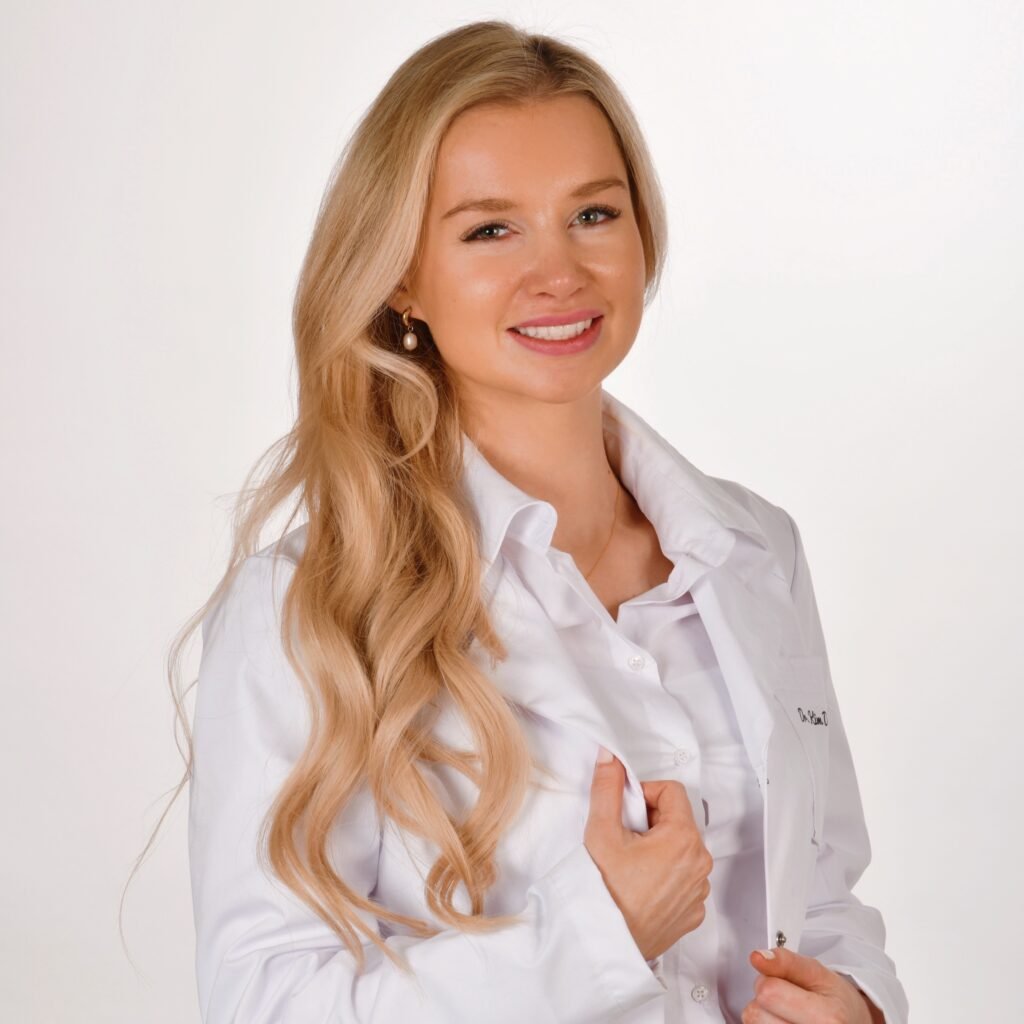Self-tanning products have become increasingly popular in recent years, providing a safer alternative to tanning in the sun or tanning beds. While they offer a way to achieve a sun-kissed glow without exposing the skin to harmful UV rays, some people are concerned about their safety and potential to cause premature aging. In this blog post, we will explore the science behind self-tanning products, their safety profile, and whether they can cause aging.
You can also watch my video on Youtube where I discuss this topic and where I also go over the history of the tanned skin beauty ideal.
The History of Self-Tanning Products
Self-tanning products have been around for decades, with the first product introduced in the 1950s by Coppertone. The product was called “Quick Tan” and was advertised as a lotion that could make you “tan overnight”.

In the 1980s, self-tanning products became more widely available, and companies such as L’Oreal and Estee Lauder began to introduce their own versions of the product. These early self-tanners often produced an orange or streaky appearance and had an unpleasant odor, but advancements in technology and formulation have led to improved products that produce a more natural-looking tan.
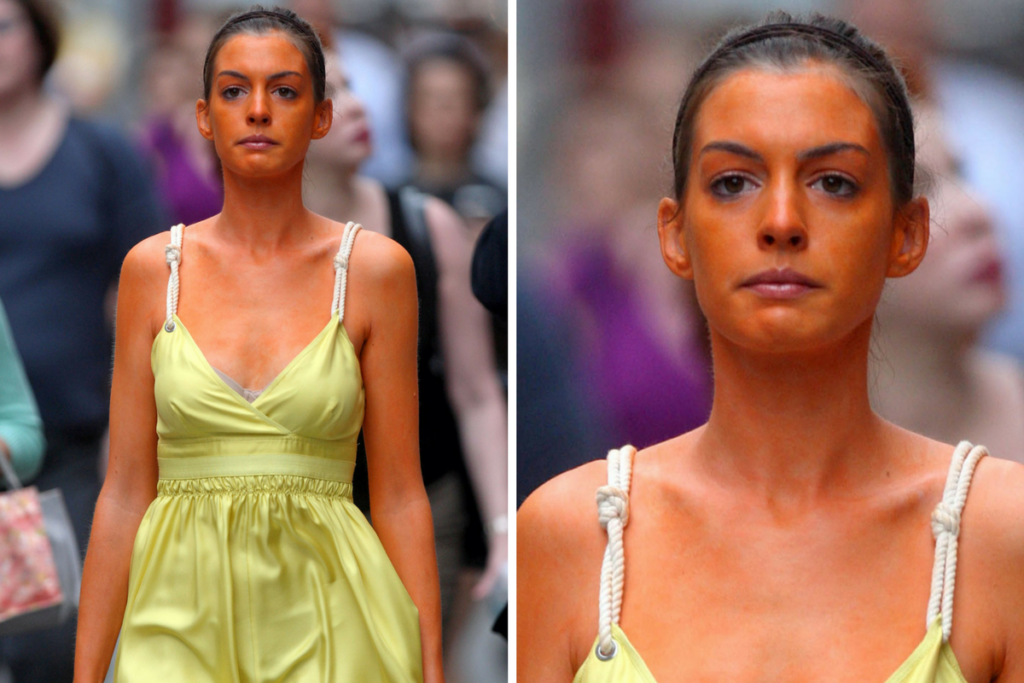
Today, there are many types of self-tanning products available, including lotions, sprays, mousses, and wipes. According to a survey conducted by Harris Poll on behalf of the American Academy of Dermatology, 36% of women in the US use self-tanner regularly.
36% of women use self-tanner regularly.
How Self-Tanners Work and the Brown Pigment Formation
Self-tanner is a product that gives you a fake tan without having to expose your skin to UV rays. The active ingredient in most self-tanners is dihydroxyacetone (DHA). When you apply self-tanner to your skin, the DHA molecules interact with the amino acids in the dead skin cells on the surface of your skin, producing a brown pigment called melanoidins.
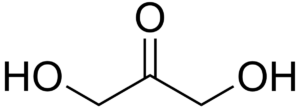
This reaction occurs through a chemical process called the Maillard reaction, which creates a range of different pigments and compounds, including melanoidins, which give the skin its brown color. The Maillard reaction is also responsible for the browning of food during cooking, such as when bread is toasted or meat is grilled.
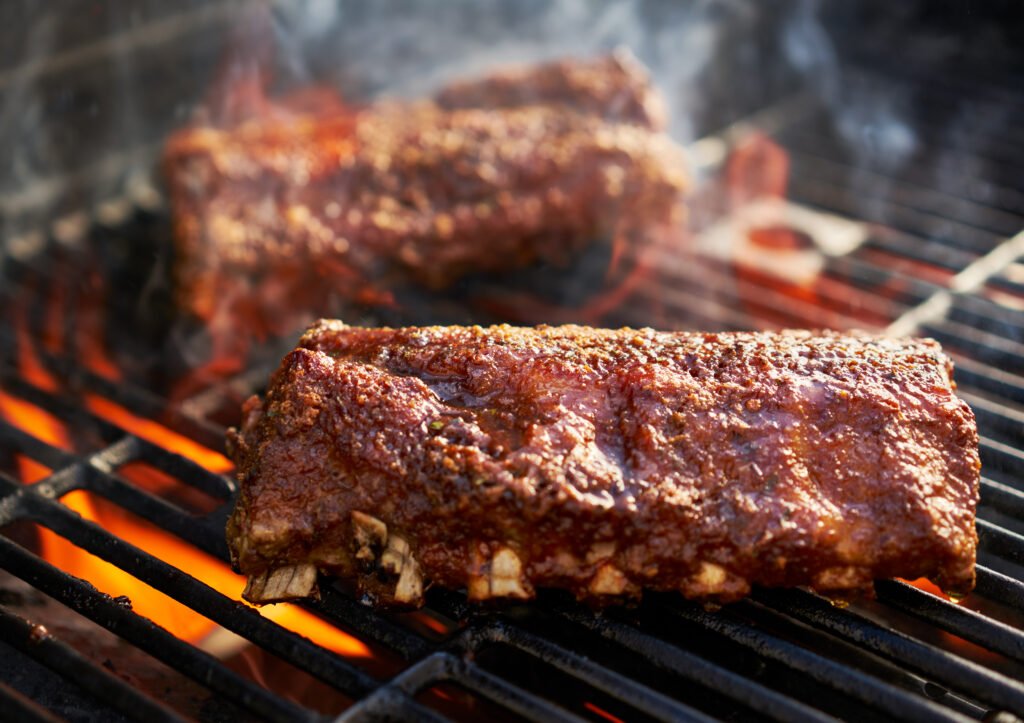
Real Tan vs. Fake Tan
The difference between a real tan and a fake tan is how they are created. A real tan is caused by exposure to UV rays, which stimulate the production of melanin in the skin.

Melanin is a pigment that gives the skin its color and helps protect it from further damage from the sun. In contrast, a fake tan created by DHA only colors the dead skin cells on the surface of the skin and does not provide any protection from the sun.

The Safety of Self-Tanning Products
The safety of self-tanning products has been a topic of concern for many people. Some have questioned whether the active ingredient, dihydroxyacetone (DHA), is safe for use on the skin.
The good news is that numerous studies have shown that DHA is safe when used externally on the skin in cosmetic products. DHA has been used in self-tanning products for decades, and there have been no reported cases of serious adverse effects.
Moreover, DHA is not known to be carcinogenic, mutagenic, or toxic to humans. In fact, DHA has been approved by regulatory agencies such as the US Food and Drug Administration (FDA) and the European Commission as a safe cosmetic ingredient.
However, it is important to note that DHA can cause an allergic reaction in some people, leading to redness, itching, and rash. Therefore, it is recommended to do a patch test before applying self-tanning products to the entire body. If you experience any signs of an allergic reaction, stop using the product immediately and seek medical attention if necessary.
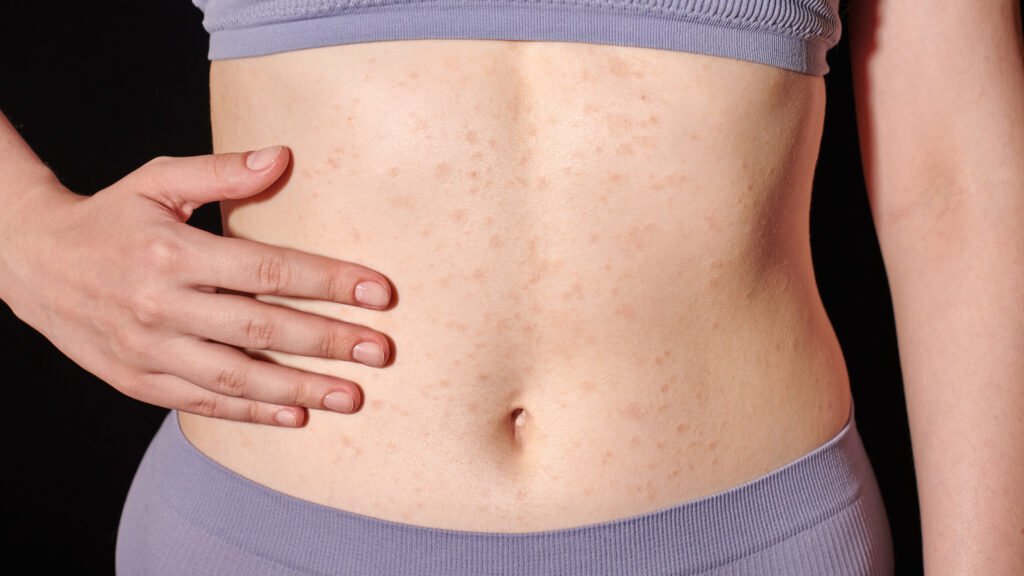
Can Self-Tanning Products Cause Premature Aging?
There is no clear evidence that self-tanning products cause premature aging in humans. While some studies have raised concerns about the potential for the Maillard reaction, which creates the brown pigment in self-tanners, to generate free radicals that could cause skin damage, these studies were conducted in vitro or in animal models and have not been replicated in human studies. Additionally, studies have shown that the active ingredient in most self-tanners, DHA, does not penetrate beyond the outermost layer of the skin, which suggests that it does not pose a significant risk to deeper layers of the skin and would not cause premature aging or skin damage.
However, it is still important to wear sunscreen in addition to using self-tanners to protect against harmful UV rays, which are the primary cause of premature aging and skin damage.
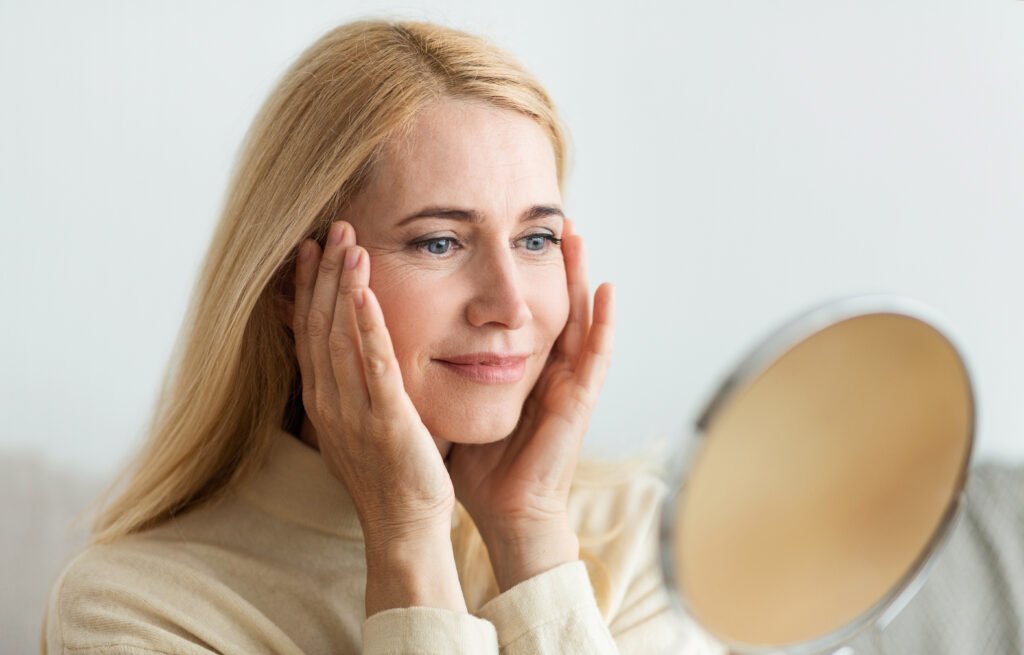
Conclusion
In conclusion, there is currently no clear evidence that self-tanning products cause premature aging or DNA damage in humans. While some studies have suggested that self-tanners could potentially protect the skin from aging, more research is needed to confirm these findings. Nevertheless, self-tanners are generally considered safe to use in the small amounts found in cosmetic products and are a safer alternative to sun exposure or tanning beds, which can significantly increase the risk of skin cancer and accelerate skin aging.
Remember to always use self-tanners as directed, exfoliate well before use, and never forget to use sunscreen to protect your skin from harmful UV rays. With proper use and precautions, self-tanning products can help you achieve a healthy, sun-kissed glow without exposing your skin to the harmful effects of UV radiation.
So, go ahead and enjoy your self-tanner, but always remember to take care of your skin and protect it from the sun!
References
- Johnson JA,Fusaro RM.Protection against long ultraviolet radiation: topical browning agents and a new outlook. Dermatologica 1987;175:53-7. Yourick JJ, Koenig ML, Yourick DL, et al. Fate of chemicals in skin after dermal application: does the in vitro skin reservoir affect the estimate of systemic absorption?
- Toxicol Appl Pharmacol. 2004;195:309-320. Beutler E, Guinto E. The metabolism of dihydroxyacetone by intact erythrocytes. J Lab Clin Med. 1973;82:534-545. Ouellette M, Makkay AM, Papke RT.
- Dihydroxyacetone metabolism in Haloferax volcanii. Front Microbiol. 2013;4:376. Akin FJ, Marlowe E. Non-carcinogenicity of dihydroxyacetone by skin painting. J Environ Pathol Toxicol Oncol. 1984;5:349-351.
- Petersen AB, Na R, Wulf HC. Sunless skin tanning with dihydroxyacetone delays broad-spectrum ultraviolet photocarcinogenesis in hairless mice. Mutat Res. 2003;542:129-138.
- Kim SB, Hayase F, Kato H. Desmutagenic effect of alpha-dicarbonyl and alpha-hydroxycarbonyl compounds against mutagenic heterocyclic amines. Mutat Res. 1987;177:9-15.
- Petersen AB, Wulf HC, Gniadecki R, et al. Dihydroxyacetone, the active browning ingredient in sunless tanning lotions, induces DNA damage, cell-cycle block and apoptosis in cultured HaCaT keratinocytes. Mutat Res. 2004;560:173-186.
- Lloyd RV, Fong AJ, Sayre RM. In vivo formation of Maillard reaction free radicals in mouse skin. J Invest Dermatol. 2001;117:740-742.
- Pham HN, DeMarini DM, Brockmann HE. Mutagenicity of skin tanning lotions. J Environ Pathol Toxicol. 1979;3:227-231.
- Yamaguchi T. Mutagenicity of trioses and methyl glyoxan on Salmonella typhimurium. Agric Biol Chem. 1982;46:849-851.
- Follett KA, Johnson JA, Fusaro RM. Protection of photosensitized rats against long ultraviolet radiation by topical application of compounds with structures similar to that of dihydroxyacetone. Dermatologica. 1987;175:58-63.
- Haywood, R. M., & Wardman, P. (1989). The chemistry of melanoidins: some current research questions. Food Chemistry, 31(2), 83-97.
- Faurschou A, Janjua NR, Wulf HC. Sun protection effect of dihydroxyacetone. Arch Dermatol. 2004;140:886-887.
- Jung, K., Seifert, M., Herrling, T., Fuchs, J., & Zastrow, L. (2007). UV-generated free radicals (FR) in skin: their prevention by sunscreens and their induction by self-tanning agents. Spectrochimica Acta Part A: Molecular and Biomolecular Spectroscopy, 66(3), 727-731.
- Dihydroxyacetone (DHA) as used in cosmetic products. (2008). CIR Compendium, 26(1), 1-89.
- Armas LA, Fusaro RM, Sayre RM, et al. Do melanoidins induced by topical 9% dihydroxyacetone sunless tanning spray inhibit vitamin d production? A pilot study. Photochem Photobiol. 2009;85:1265-1266.
- Mahmoud, B. H., & Hexsel, C. L. (2010). Aging and photoaging: a comprehensive review. Journal of Cosmetic Dermatology, 9(4), 260-270.
- Nilsen LT, Hannevik M, Veierød MB, et al. Protection against ultraviolet A-induced oxidative damage in human skin by dihydroxyacetone. Photodermatol Photoimmunol Photomed. 2010;26(1):32-37.
- Morren M, Dooms-Goossens A, Heidbuchel M, et al. Contact allergy to dihydroxyacetone. Contact Dermatitis. 1991;25:326-327.
- Lindqvist PG, et al. Photodermatol Photoimmunol Photomed. 2012 Apr;28(2):58-62).
- “Self-Tanners and Bronzers.” American Academy of Dermatology. https://www.aad.org/public/everyday-care/sun-protection/sunscreen-patients/self-tanners-bronzers
- “Dihydroxyacetone.” Cosmetics Info. https://cosmeticsinfo.org/ingredient/dihydroxyacetone
- “Self-tanners: Can they prevent premature aging?” Harvard Health Publishing. https://www.health.harvard.edu/staying-healthy/self-tanners-can-they-prevent-premature-aging
- “The Maillard reaction in vivo.” The Journal of Investigative Dermatology. https://www.ncbi.nlm.nih.gov/pmc/articles/PMC2688146/
- “Sunless Tanning Products.” U.S. Food and Drug Administration. https://www.fda.gov/cosmetics/cosmetic-products/sunless-tanning-products
- “Consumer Survey on Cosmetic Products.” Harris Poll. https://www.harrisinteractive.com/insights/skin-care-in-america-2017
- “The safety of dihydroxyacetone (DHA) for use in sunless tanning products.” U.S. Food and Drug Administration. https://www.fda.gov/cosmetics/cosmetic-ingredients/dihydroxyacetone-dha
- Bovenschen HJ, Korver JE, van der Valk PG. Contact dermatitis to self-tanning products. Contact Dermatitis. 2009;60:290-291.
Visit Doctor Contour


